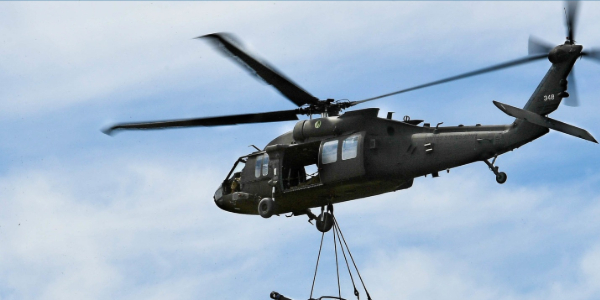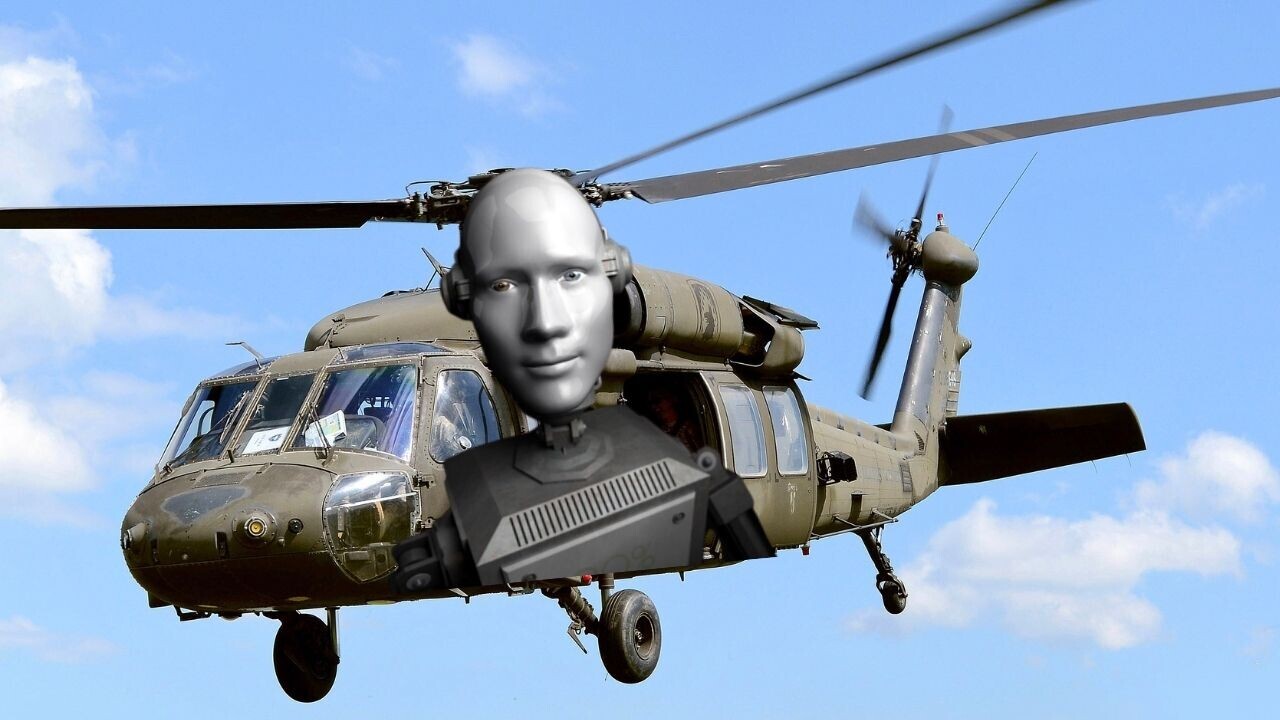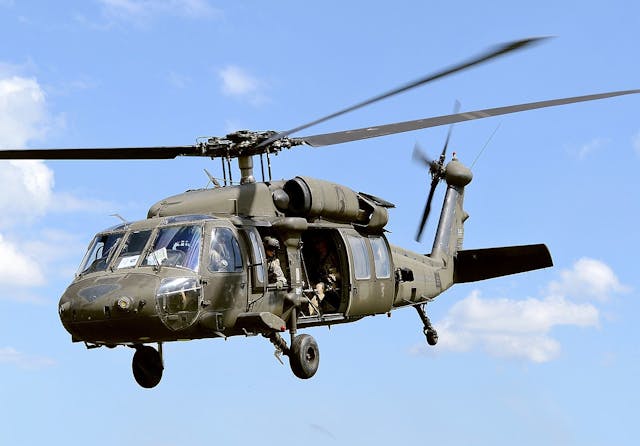Introducing the Power and Adaptability of the Blackhawk Helicopter
The Blackhawk helicopter stands as a testament to design quality and military development, dramatically shaping the landscape of contemporary aerial procedures. As we explore its history and functional abilities, one should take into consideration just how the Blackhawk proceeds to influence contemporary fight strategies and humanitarian efforts alike.
Background of the Blackhawk
The history of the Blackhawk helicopter is marked by substantial technical developments and a critical advancement in military air travel. Established in the late 1960s by Sikorsky Airplane, the UH-60 Blackhawk was at first developed to replace the older UH-1 Iroquois, generally called the "Huey." The Blackhawk's very first flight took place in 1974, and it was formally presented to the U.S. Military in 1979.


This aircraft was made to fulfill the demanding needs of modern war, concentrating on toughness, flexibility, and speed (Blackhawk Helicopter). Its capability to operate in numerous atmospheres, coupled with innovative avionics and style features, promptly established the Blackhawk as an important property for army operations worldwide
Throughout the 1980s and 1990s, the Blackhawk saw substantial usage in different problems, including the Gulf War and humanitarian goals. The helicopter's flexibility allowed it to offer several functions, from army transportation to medevac and logistical support. As modern technology advanced, so did the Blackhawk, causing countless variations that dealt with specific objective requirements. Today, the Blackhawk continues to be a famous icon of military aviation, continuously fine-tuned to satisfy modern obstacles.
Secret Functions and Specifications
Blackhawk helicopters are renowned for their engineering excellence and functional convenience, flaunting a series of vital features and requirements that boost their effectiveness in various military roles. One of one of the most significant characteristics is their dual-engine arrangement, commonly powered by the T700-GE-701C engines, which offer remarkable reliability and efficiency. The helicopter has a maximum cruise ship rate of around 150 knots and a solution ceiling of approximately 20,000 feet, permitting it to operate efficiently in diverse settings.
The Blackhawk's airframe is built from advanced composite products and light weight aluminum alloys, guaranteeing a robust framework while decreasing weight. It includes a totally expressed blades system that offers premium dexterity and security. The helicopter can suit as much as 11 combat soldiers or bring as much as 8,000 pounds of outside freight, making it extremely versatile for numerous goals.
Additionally, the Blackhawk is furnished with advanced avionics and communication systems, enhancing situational understanding and goal coordination. Its capability to operate in damaging weather, combined with its reduced acoustic signature, makes it a sneaky option for tactical procedures. Overall, these features add to the Blackhawk's reputation as a keystone of contemporary armed forces aeronautics.
Versatile Operational Duties
Popular for their design excellence and progressed capabilities, Blackhawk helicopters offer a wide range of functional roles within army frameworks. Initially designed for army transportation, their convenience has actually increased, allowing them to execute various objectives efficiently.
One of the key functions of the Blackhawk is as an energy helicopter, helping with logistical assistance by carrying products and employees to and from remote places. In find out addition, they master medical evacuation (MEDEVAC) operations, geared up with innovative medical devices and workers to provide essential treatment in the area.
In combat scenarios, Blackhawks can operate as armed escort platforms, sustaining ground pressures by engaging adversary possessions while making sure army security. Their capacity for unique operations makes them essential; they can conduct reconnaissance goals, employees recuperation, and straight activity raids, usually in high-threat environments.
Additionally, the Blackhawk's adaptability allows it to sustain humanitarian goals and catastrophe feedback initiatives, delivering help and important solutions in times of dilemma. This wide range of operational functions shows the Blackhawk helicopter's unrivaled flexibility, declaring its status as a crucial property in modern-day military procedures worldwide.
Technological Developments
Numerous technical developments add to the Blackhawk helicopter's exceptional efficiency and adaptability in varied operational atmospheres. One of one of the most considerable developments is its composite rotor blades, which enhance lift and maneuverability while decreasing weight and maintenance needs. The rotor system employs innovative materials that reinforce longevity and resist ecological deterioration, guaranteeing trustworthy procedure in severe problems.
Additionally, the Blackhawk is furnished with a state-of-the-art avionics collection that incorporates advanced navigation and communication systems - Blackhawk Helicopter. This consists of GPS, radar, and multi-function screens that promote real-time situational awareness for pilots, adding to mission success under challenging circumstances
Moreover, the helicopter's fly-by-wire control system allows for specific handling and enhanced responsiveness, giving pilots with improved control during complex maneuvers. The incorporation of innovative engine innovation, such as the T700-GE-701C engine, further boosts performance, providing boosted power output and gas effectiveness.
Last but not least, modular layout concepts enable rapid reconfiguration for numerous goals, from army transport to clinical discharge, making the Blackhawk a versatile possession in humanitarian and army procedures. These technical advancements jointly make certain that the Blackhawk stays a formidable existence in the skies.
Effect On Modern War

Outfitted with innovative avionics and interaction systems, the Blackhawk enables seamless control among ground and air units, guaranteeing prompt and exact response to dynamic battle circumstances. Its versatility permits fast implementation in diverse settings, from city setups to tough terrains, mirroring the diverse nature of contemporary war.
In Addition, the Blackhawk's superior rate and dexterity help with fast insertion and extraction of personnel, decreasing exposure to opponent fire. Its ability to run in aggressive conditions, coupled with advanced defensive measures, boosts survivability and objective success prices.
As modern-day problems increasingly count on joint operations and fast action, the Blackhawk helicopter continues to be at the leading edge of military method, personifying the evolution of air flexibility and the critical role of air power in accomplishing strategic purposes. Its influence on modern-day warfare continues to redefine the abilities of armed pressures internationally.

Final Thought
To conclude, the Blackhawk helicopter exemplifies the recommended you read crossway of sophisticated design and operational flexibility, solidifying its status as a foundation of modern armed forces aeronautics. Its historic relevance, remarkable functions, and flexibility throughout numerous objective profiles underscore its essential role in modern warfare. As technical advancements remain to boost its capabilities, the Blackhawk continues to be a necessary property for armed pressures worldwide, demonstrating exceptional efficiency in both battle and humanitarian procedures.
The Blackhawk helicopter stands as a testament to design excellence and military technology, considerably forming the landscape of contemporary aerial operations.The background of the Blackhawk helicopter is marked by substantial technical developments and a calculated advancement in armed forces air travel.Blackhawk helicopters are renowned for their design quality and operational flexibility, flaunting an array of crucial functions and specs that improve their effectiveness in various armed forces duties.Many technical technologies contribute to the Blackhawk helicopter's outstanding performance and adaptability in varied functional settings.In conclusion, the Blackhawk helicopter exemplifies the crossway of innovative engineering and functional convenience, solidifying its condition as a cornerstone of modern army air travel.